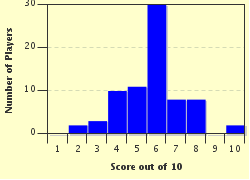
"Red on Yellow, Kills a Fellow" Quiz
Some of the creatures featured in this quiz are poisonous, some of them are venomous and some are neither. Why not play this quiz and discover if you can correctly match the creatures listed into the appropriate category?
A matching quiz
by SisterSeagull.
Estimated time: 5 mins.
